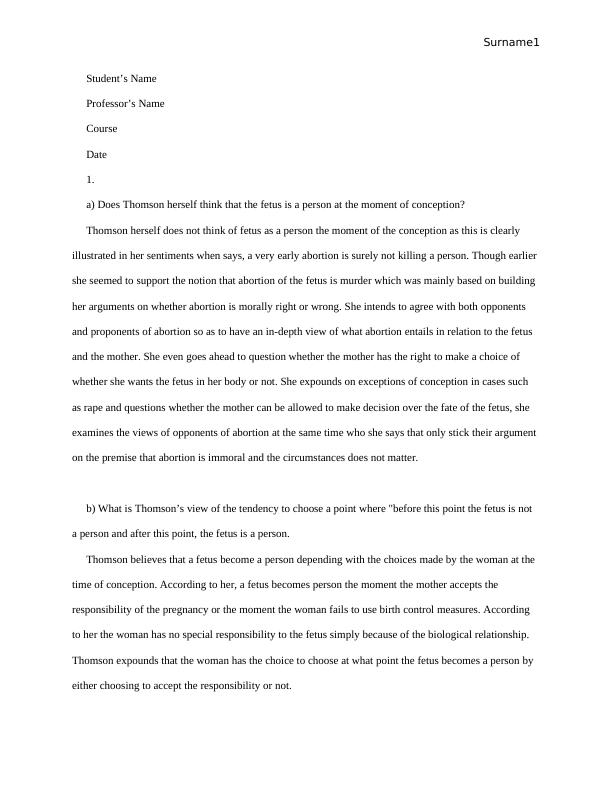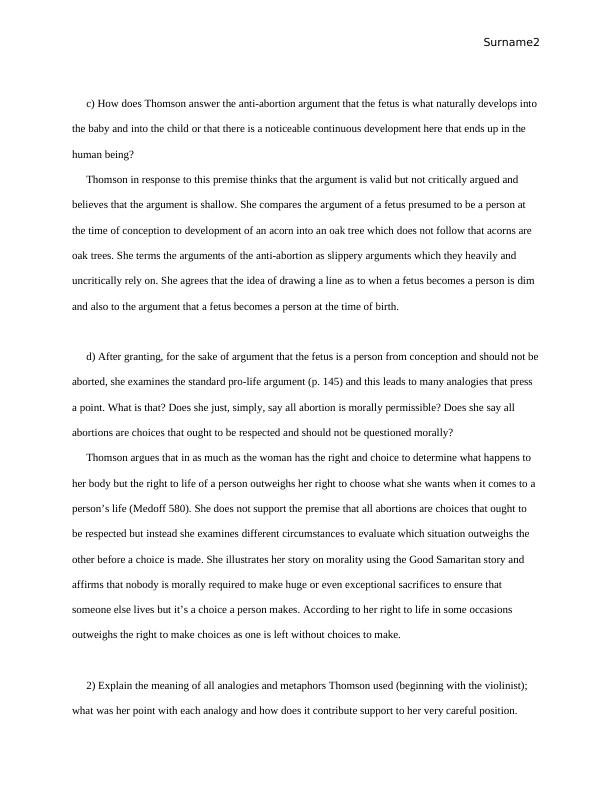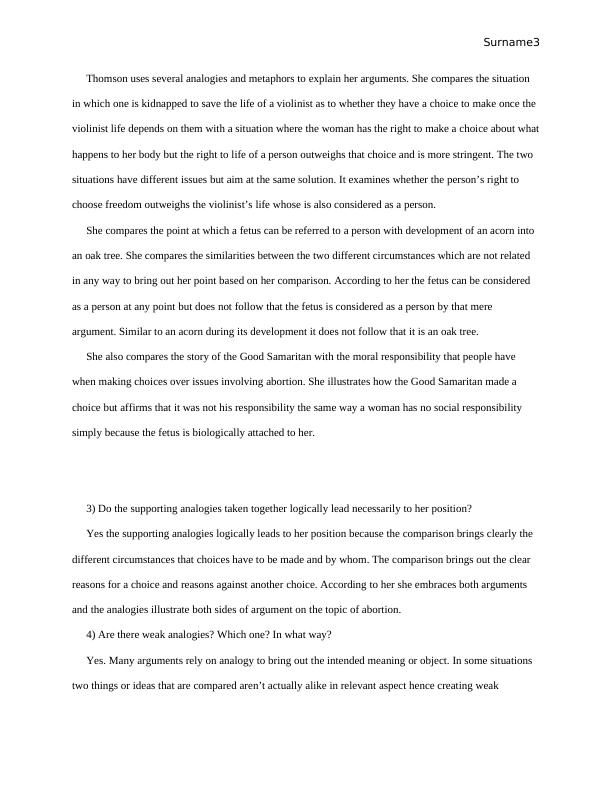Thomson's Views on Abortion
Study and respond to the article 'In Defense of Abortion' by Judith Jarvis Thomson.
7 Pages2020 Words318 Views
Added on 2022-12-03
About This Document
This article discusses Judith Thomson's views on abortion and her arguments for the woman's right to choose. It examines her stance on the personhood of the fetus, the tendency to choose a point of personhood, and the anti-abortion argument. Thomson also explores the moral permissibility of abortion and the analogies she uses to support her position. The article concludes with a discussion on the connection between this issue and various moral theories. Overall, Thomson's argument is compelling and open to considering different circumstances.
Thomson's Views on Abortion
Study and respond to the article 'In Defense of Abortion' by Judith Jarvis Thomson.
Added on 2022-12-03
ShareRelated Documents
End of preview
Want to access all the pages? Upload your documents or become a member.
The importance of ethics in laws such as abortion
|7
|1822
|136
(PDF) Theorizing Time in Abortion Law and Human Rights
|6
|1203
|76
Case Study on Moral Status
|6
|1273
|30
An Appeal for Anti-Abortion Legislation
|5
|1057
|172



